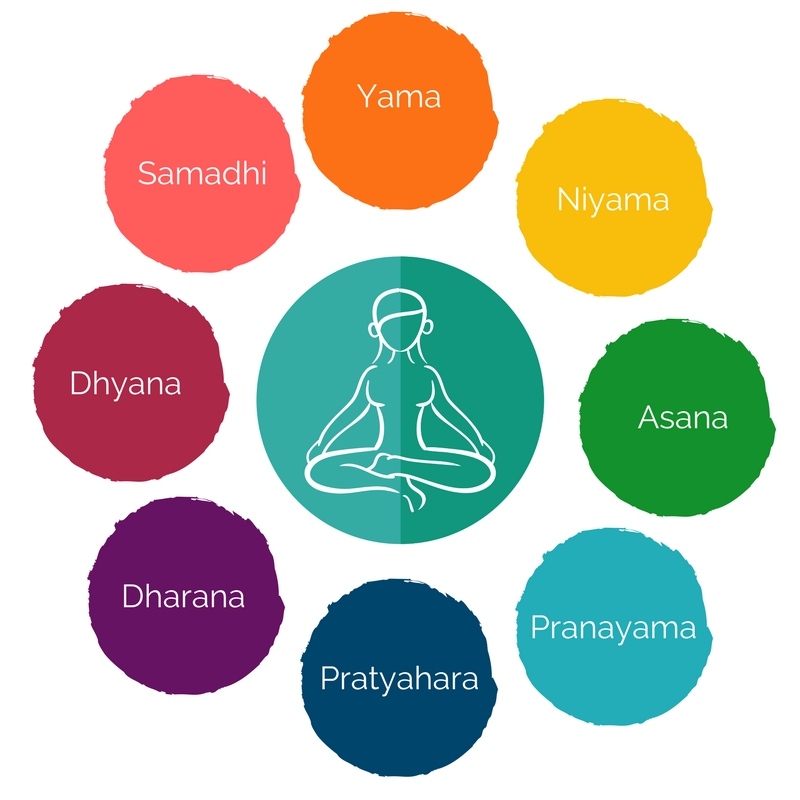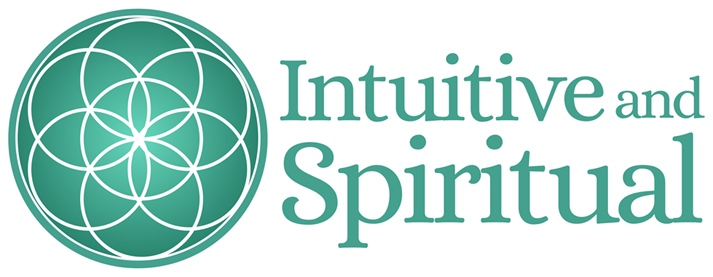Patanjali’s Teachings: The Yamas
One of the books I’m reading right now is “The Yoga Sutras of Patanjali.” It’s a powerful read. This particular version has a long introduction explaining Patanjali’s Teachings and the Yamas.
Patanjali taught about the eight limbs of yoga (yoga, meaning union) in his sutras (small passages or threads). These limbs all connect so that individuals can strive to lead an enlightened life. This is a life in which we purify ourselves and make it possible to be a positive force in the world.
This post is part of a series on Patanjali and the eight limbs of yoga.

The eight limbs:
- yamas – the laws of life and social awareness
- niyamas – moral behavior
- asanas – what we think of in the western world as “yoga” – postures and positions
- pranayamas – breathing exercises
- pratyaharas – letting go of the senses to turn inward
- dharanas – focused attention
- dhyanas – meditations
- samadhi – expanded awareness and the settled mind
The idea is to get to samadhi: the settled mind.
The Yamas
The Yamas – the guidelines for social behavior – are one of the eight limbs that I wanted to reflect on here. As I’ve been reading, I was struck by how much my life has aligned with them since becoming a committed meditator.
Ahimsa – Nonviolence
This includes physical non-violence, but also things like non-violent communication, non-violence in thoughts, and emotions. In my own life, this is part of why I became vegetarian: practicing non-violence towards animals means – for me – that I cannot kill them. I release spiders I find in my house, send love to the bees who fly in my path, take in homeless animals when they come to my home (or at least get them to a vet/shelter that will know how to care for them) and more.
Non-violence in my thoughts is a little more difficult. I am not perfect at this by any means and there’s always room for improvement. It’s not always easy to keep my thoughts neutral when someone is mean or rude to me. However, this yama speaks to the idea that we live in the moment, accept things as they happen, and try not to resist with anger or fear, but instead with love.
Lastly, this yama also includes compassion for oneself. Often times when we can withhold judgement of others, we still judge ourselves most harshly. Instead of getting mad at ourselves when we falter, we can change our thoughts to compassion and love for the fact that we tried, gratitude for the hard work we’ve done, and the courage to keep going.
This yama encourages us to leave free from fear and embrace love.
Satya – Truthfulness
This yama encourages us to live, speak, and be our truth. In perfecting ahimsa, we get better with satya. It encourages us to say what we mean to say: to think about our words before they ever leave our mouths – to speak intentionally.
This echoes Don Miguel Ruiz in “The Four Agreements”: Be Impeccable With Your Word.
[bctt tweet=”Be, live, and speak your truth with the highest intentions of love.” username=”n2itvnspiritual”]
But this also imbibes honesty: with ourselves, including when “no one’s looking.” When you act honestly when “no one’s looking,” you develop character and integrity. Studies have shown that people act more honorably when they know they’re on camera. They are more honest. But do they have integrity? When people know they are not being recorded, they sometimes don’t always act with integrity.
In my personal experience, sometimes my speech becomes excessive because I’m nervous about being around someone. Or, I’ll mindlessly throw out a comment in which I “didn’t mean what I said.” As I practice meditation, these two things happen less and less. I also find myself becoming involved in causes that are greater than me, with the intention of helping society to embrace social justice – both at home and abroad.
Asteya – Non-stealing
While it’s not that hard to “not steal things,” this yama incorporates a broader sense of non-stealing, as well. This means that we do not take more than we need, and do not take what is not offered – both for ourselves or in not permitting others to do so. “Stealing the spotlight,” so to speak, or not acknowledging the contributions of others goes against asteya. Wasting other people’s time, or not using our talents are also forms of not practicing asteya. These examples are more on a personal level.
Take it up to the societal level and this includes standing up for social justice and working to eradicate oppression. When other people’s rights and liberties have been stolen, it is prudent to restore the balance. Note that I did not say “fight against” – this implies resistance. Instead, this is to use non-violence to stand for justice for all.
An example of asteya is with the monks in Myanmar (Burma) who were expelled from Tibet at the hands of the Chinese government in 1950. To this day, they practice non-violence in their efforts to reclaim the sacred lands where they once lived.
When I participated in the Women’s March in Washington, DC, it wasn’t to protest a new president. I was standing for women’s rights, for the rights of all people, and for love. I stood by the Venerable Pannavati as she led our group in mindfulness and reminded us all that we are non-violent, and that we are standing up for justice.
In practicing asteya, we can then learn to overcome greed, practice generosity and empathy.
Brahmacharya – Continence
People have sometimes confused this particular yama with “celibacy” because one of the translations of “brahmacharya” means just that. Monks and other holy people who are celibate as part of their devotion practice brahmacharya in this way.
For the rest of us, however, it means being mindful and channeling our sexual energies in mindful ways. It includes expressing our sexuality in a committed relationship and that when we do engage in this activity, that we do it with the highest intentions of love. This yama teaches us that we must not use sex as a way to release pent up energy (especially frustration or anger) but as a way to connect with a loved one respectfully, in moderation, and never as a way to hurt anyone.
I have been married 16 years to my Juanito. I won’t go into detail here – y’all have no idea how easily I can blush! – but let’s just say that this yama encourages me to keep doing what we’ve been doing: honoring each other and having the best intentions for one another.
Aparigraha – Non-coveting
This yama teaches that we need to relinquish our need to have things. In US society, this can be a most difficult yama to follow. Constant messages of “if you make more money, you can buy more things, and if you have more things, you are successful and success is a virtue” come at us.
However, according to the introduction of “The Yoga Sutras of Patanjali,” “aparigraha refers to the state that comes spontaneously as the mind begins to experience the effortless Being of the Self” (p 62).
This yama embodies non-attachment: to things, to self, to ideas such as, “I must get to enlightenment!” If we can live with only what we need and work to desire less, then we can begin to really live out this yama.
Just recently, I was sitting at my desk in my office working from my laptop. I still had my desktop computer and used it only occasionally, perhaps to get a document or two off of it that I hadn’t saved onto a thumb drive. After studying this yama, I thought, “well, I don’t need this anymore, it’s gathering dust, and I need to recycle it.” I dropped it off at a nearby Stapes (not an endorsement here; just a place where you can recycle electronic items responsibly). I feel so much better about my office space just doing that!
Sources:
Patanjali’s Yoga Sutra: How to live by the yamas
The Five Yamas of Yoga
The Yoga Sutras of Patanjali. Translated/introduced by Alistair Shearer. 1982. New York.








I honestly learned so much here today as I didn’t know much about The Yamas. So, I couldn’t thank you more for the enlightening education this Monday morning. Also, just want to now wish you a most wonderful week ahead. Many hugs and love to you, my friend!!! <3
Janine – sweet friend. Thank you for your sweet words. Glad you were able to learn something here and have a little take-away. I hope you’ve had a great week and weekend. Tomorrow we start again, but I can say that you make me smile. Thank you – always – for your support and words of kindness and encouragement. xoxo
I didn’t want to ignore this, Lil Sis, but I have to run this morning. Sending you hugs on this brilliantly beautiful Monday morning.
Big Bro, thank you for taking some time to stop by. 🙂 Hope you have had a great week: markets, chickens, writing – I know you stay busy. Sending you hugs and don’t forget to “just be” for awhile. 🙂
I admire your persistence in learning, growing, and teaching. Kudos Cynthia. The Yamas sounds like a wise compass to follow.
Brad – ah, thank you, friend! Learning, growing, and teaching. These three things seem to be what I am called to do – no matter what other things I attempt or try. Hehe. I’m really intrigued by the Yamas, Niyamas and the other 5 limbs of yoga. It’s got me doing a morning (physical) yoga practice a few times a week. I hope you’ve had a great week. Sending hugs.
What a powerful article, Cynthia. As I was reading, I realized how much I still have to learn and how often I falter. I remember attending a lecture years ago by Irina Tweedie, a Sufi master, where she said (and I paraphrase): ‘If you overeat, you are stealing. It’s okay to throw away your food. There are hungry cats and dogs out there. There are even hungry worms and hungry germs.’ This really shifted my thinking and catapulted my thoughts into higher consciousness. Like you, I am vegetarian and do not kill spiders and insects that find their way into my home. You are a kindred spirit, and I’m so grateful to be traveling this path with you ❤️
Tina – hello, friend! Ah, life is but a learning, journey, no? You falter? How about this: you are a lightworker who is also part of an earthly journey, full of learnings, doings, and revelations. It’s all a process and all in due time, no? Haha, between you and Sue, you both really help to drive home that point for me. So, see? You, too, are wise. I like Irina Tweedie’s words. There is wisdom all around us. And it’s true: hungry cats, dogs, worms, squirrels, birds, worms, germs (hehe) are everywhere. Oooh, that made me think about the story of the raven/crow. They are proliferating in our modern culture. Their ability to adapt, blend in, and find food has helped them to absolutely thrive in modern culture. Their call, “cras, cras” means “tomorrow” and they are said to be quite spiritual. So let’s help feed the birds! hehe. And well, we practice our limbs of yoga while doing so. 🙂 I’ve traveled the vegetarian road on and off, but in recent years I have maintained it. My desire for all animals to live life naturally, without pain, overrides my desire to eat them. It gets more pronounced the more I meditate. I eventually want to be vegan, but it’s not easy with a omnivorous partner and how much dairy/eggs are in so many products! I suppose I could eat beans and rice with avocados every day, but I need some variety. LOL. Sending you hugs and more hugs. I’m grateful our paths have crossed and that we’re traveling more parallel these days. You have so much to teach and so much light to share. ✨
Aw, thank you, sweet friend. I am mostly vegetarian but border on vegan, which is where, like you, I aim to be. Crows and ravens are incredible beings and can teach us so much. Nature is the ultimate mentor. My hope is that all of humankind will soon realize this and act accordingly. Love and hugs to you, dear one ❤️
Tina – yeah, if I could just figure out cheese. I grew up on the stuff and it’s part of so many of my vegetarian meals. But you know…it’s all a process. 🙂 Love and hugs to you, too! <3
Compiling your LIFE Project experiences into a book sounds AMAZING, Cyndi. I support it 100%! You know that already, hopefully 😉 I am so proud of you, as I’ve said before, for these accomplishments of yours, with the LIFE Project completion being the latest one <3 I can’t wait to read the Haiku book too. As for the 8 limbs, this is all new to me so thank you for the reflections on all of this. Oh and those spiders you’re releasing, well, I’m doing the same over at my house xo
Christy – hehe, thank you, thank you for your sweet and kind words! You are amazing, too, you know. You have always been an inspiration to me with your kind thoughts and actions. I’m proud of you and how far we’ve both come. The 8 limbs were new to me as of a couple weeks ago, but I am so intrigued by what Patanjali wrote and said. And on behalf of spiders everywhere, they thank you, too, for your kindness. 💜💚🧡❤️💛
Dear Cynthia,
I also enjoyed learning about the eight limbs of yoga – I plan to visit again to reflect, thank you.
Thanks also for giving me a boost of joy and inspiration through your writings. Love, Maria
Maria – I’m so glad you enjoyed learning about these. I appreciate you, sweet friend. You are such a light in the world, and you also inspire me. Thank you always for your kind words and reflections. They help keep me motivated. I appreciate all you contribute – both here and on your own site, where so many students get to benefit from your teaching. Sending you big hugs and wishes for a wonderful week!
So interesting to learn about Patanjali’s Teachings and the Yamas, Cynthia!
To achieve samadhi via the 8 limbs… seems a bit like a sort of enlightenment. I like how the 8 limbs seem to point to different areas of our brains, minds and actions related to our souls and bodies as a complex.
I definitely think that Ahimsa/Nonviolence is one of the most (if not the most) important principles. And it seems other limbs could be associated with it as well.
So much to ponder here. Thanks for this wise lesson, dear friend.
Love & all my best wishes <3
Aquileana – thank you so much! Yes, that’s exactly how I interpret samadhi: as a form of enlightenment. I also love your take on the 8 limbs: the idea that it incorporates different areas of our brains, minds and actions. We are definitely a human/mind complex. Now to…convince the humans that their minds are powerful enough to change the world and take care of the planet. 🙂 Ahimsa and non-violence – yes – if we can practice this, I think we could eliminate so much suffering. Indeed, so much to ponder. I love Patanjali’s Teachings. I feel like I need to re-read his yoga sutras every week! Thank you so much for coming by and for the wisdom you share. <3